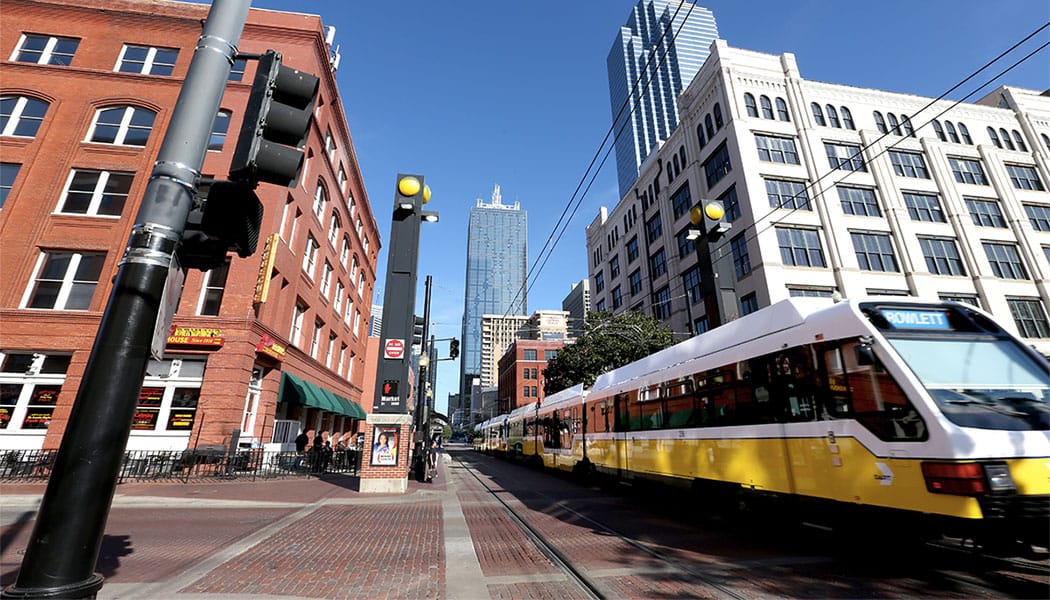
The public transportation system in the City and County of Dallas, Texas consists of a city bus service, streetcar, light rail and commuter rail. I became extremely familiar with each of these transport services during my time visiting Dallas in December 2016. Collectively, I found the Dallas Area Rapid Transit (DART) network to be highly accessible and easy to use. In this section, I will share everything you need to know to use Dallas public transportation with a wheelchair or disability.
Light Rail Trains
DART Light Rail is the easiest way to get around Dallas. The network consists of 4 lines – Blue, Green, Orange and Red – and serves a total of 64 stations. Its 93 miles of track make it the longest light rail system in the United States. The entire system is wheelchair accessible, with station access made possible by elevators and ramps. The majority of downtown stations are at street level.
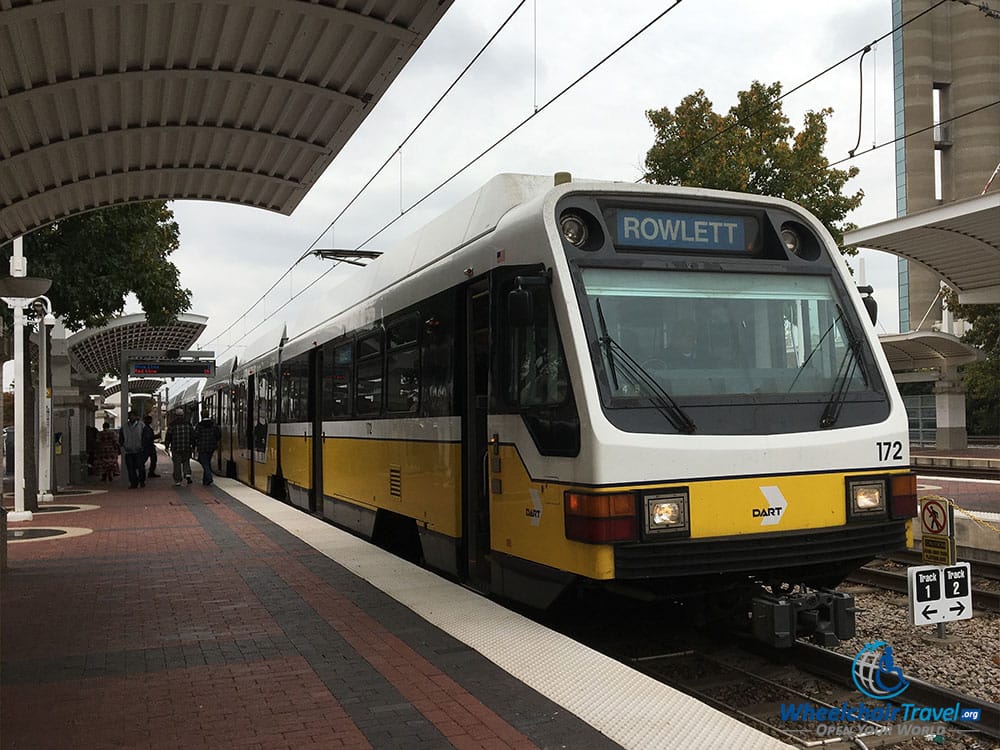
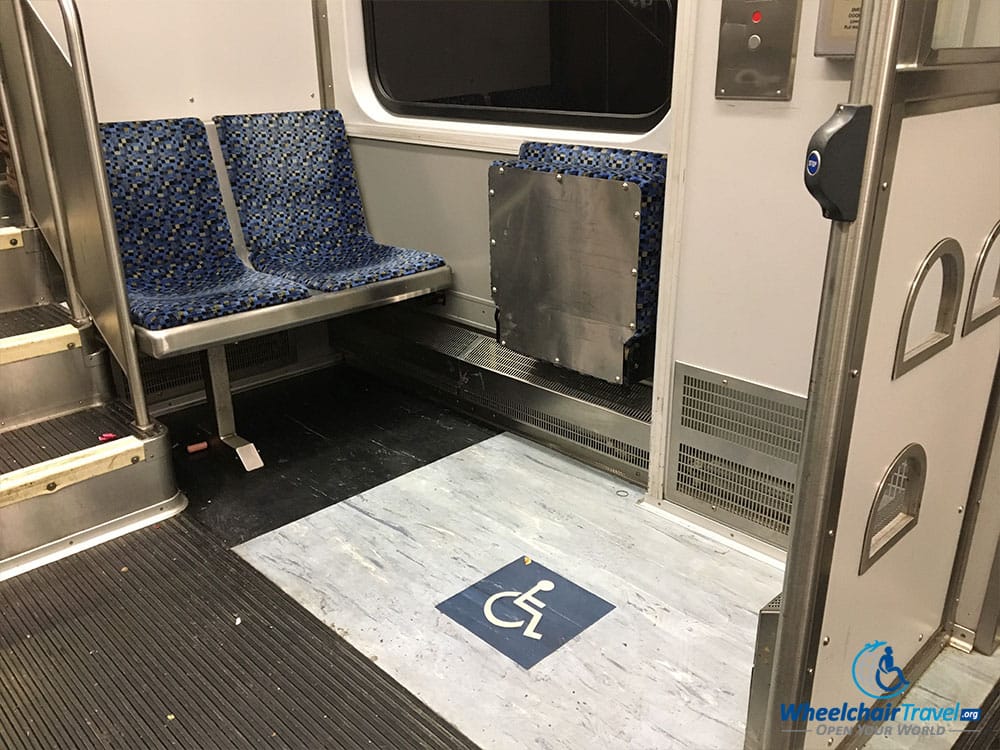
Train cars feature level-entry boarding and a small gap of 2 inches or less between the station platform and train. Inside specially marked cars, reserved spaces for wheelchairs is available. Priority seating for the disabled and elderly is also provided.
For a system map and list of light rail stations, visit www.dart.org.
City Bus
113 wheelchair accessible city bus routes operate throughout Dallas. The buses are modern, with an electronic ramp located at the front door. Two wheelchair spaces on each bus include securement straps.
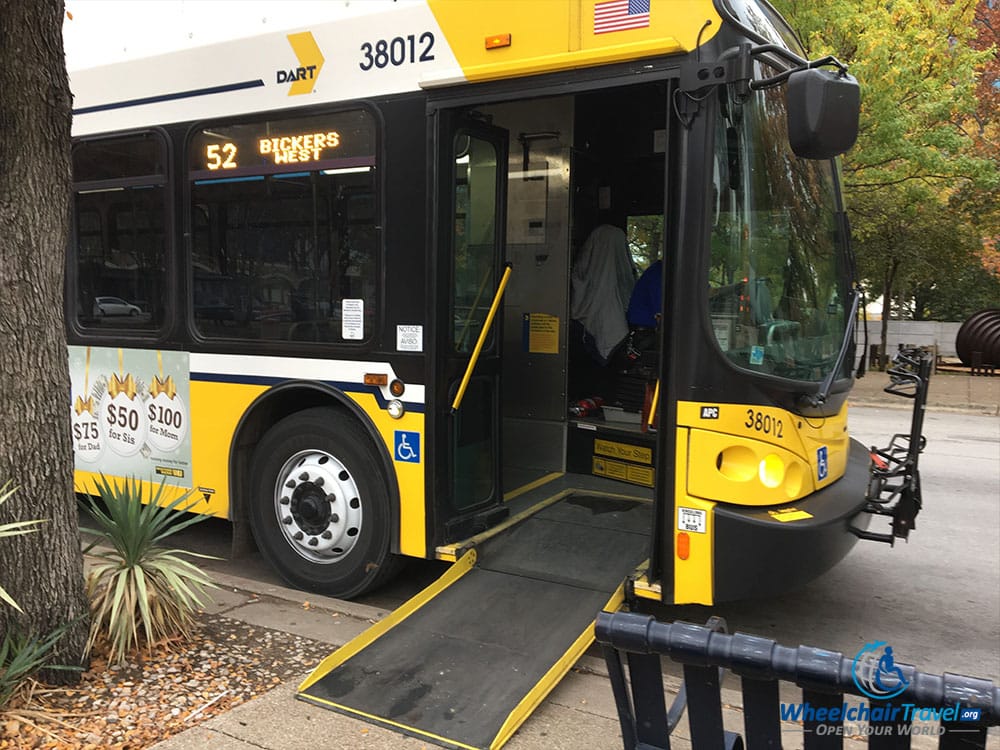
My experience on DART buses was exceedingly positive – drivers were kind, courteous and helpful. I found the buses to run according to the posted schedule, and the routes seemed to be designed for efficiency.
Wheelchair users looking to ride the city bus should flag the driver (raising a hand works best), to notify him/her of your intent to ride. Once aboard, the driver will tie down your wheelchair using securement straps.
An easy to reach stop request button is located in the wheelchair securement area. Press the button as the bus approaches the stop you desire.
For more information on riding the Dallas city buses, or to access a list of routes and maps, visit www.dart.org.
Dallas Streetcar
The Dallas Streetcar is the newest public transportation option in the city, connecting downtown with the Bishop Arts District. The streetcar serves a total of 6 stations, with the terminus ends being Union Station (in Downtown Dallas) and Bishop Arts station, at the heart of the district of the same name.
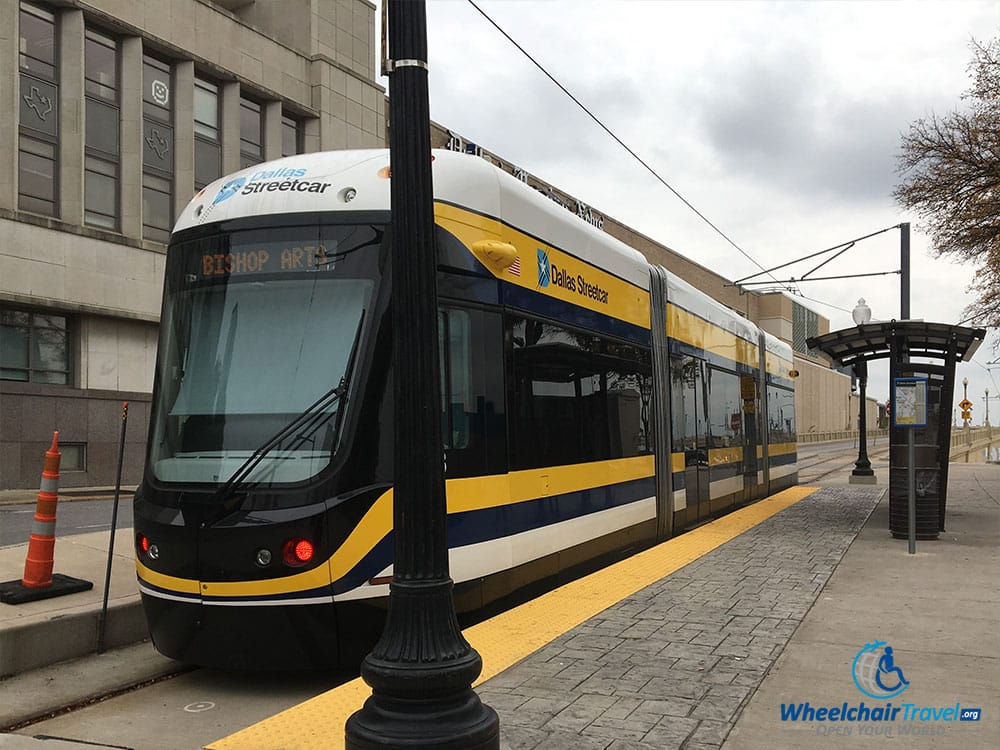
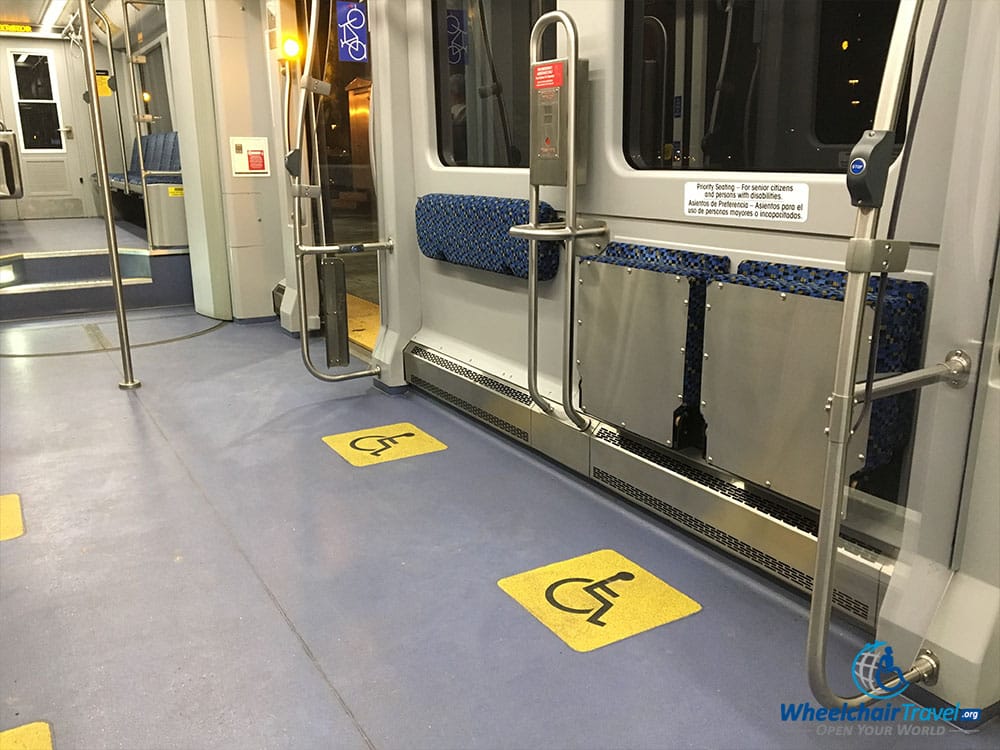
The streetcar is fully wheelchair accessible, with level-entry boarding and a gap of less than two inches between the train and station platform. Spaces reserved for wheelchair users on the streetcar are among the largest I have seen on any public transportation service.
Rides on the streetcar are completely free – there is no fare to be paid! Just hop on and off at your leisure. Trains run every 20 minutes between 5:30 a.m. and midnight. If you are staying in Downtown Dallas, the streetcar is the easiest, fastest and most accessible way to the Bishop Arts District. For more information on the Dallas Streetcar, click here.
TRE Commuter Rail
The Trinity Railway Express, or TRE, is a commuter rail line that connects Dallas and Fort Worth. The TRE is jointly owned by DART and the Fort Worth Transportation Authority.
A single line serves 10 stations, and transit times from end-to-end are just over one hour. In addition to the stop at Union Station in Downtown Dallas, other Dallas TRE stations include Victory (at the American Airlines Arena), Medical/Market Center and the DFW International Airport station.
The TRE is wheelchair accessible, but users will need to flag down the conductor for assistance. Boarding is via a ramp, as the trains are not level with the station platform.
M-Line Trolley
The McKinney Avenue Trolley, or M-Line, is a historic streetcar serving the Dallas Arts District. Due to the age of the vehicles used, there is no wheelchair access possible. Wheelchair users seeking transportation to destinations served by the M-Line should consider using the city bus or DART On-Call services.
For more information on the M-Line Trolley, visit www.mata.org.
Fares & Passes
The easiest way to purchase a fare for the Dallas city bus, light rail or TRE is via the GoPass smartphone app, for iOS and Android devices. To learn more about this app, read my blog article, Mobile App Improves Access to Public Transport in Dallas, Texas.
The above-referenced post is a guide to the features of the application, and describes the benefits of purchasing digital tickets on your phone.
In addition to mobile tickets, you can purchase single-ride fares and day passes at light rail and TRE stations, or directly from a city bus driver. Local and Regional fares are offered. Local fares and passes are valid on DART buses and trains, as well as the TRE between Union Station and DFW Airport. Regional fares and passes are valid on DART buses and trains, the entire TRE service area, as well as The T service in Fort Worth. Fares are priced as follows:
2-hour Pass (Local) – $2.50
Two-Hour Pass (Regional) – $5.00
Two-Hour Pass (Seniors & Disabled) – $1.25
Mid-Day Pass (9:30 a.m. to 2:30 p.m.) – $1.75
Day Pass (Local) – $5.00
Day Pass (Regional) – $10.00
Day Pass (Seniors & Disabled) – $2.50
Riders qualify for the reduced fare, senior and disabled pass if they satisfy one of the following:
- Seniors (65 or older) with a DART photo ID
- Disabled persons with a DART photo ID
- Medicare cardholders
If you are a wheelchair user, you won’t be asked to show ID when using a reduced fare. The discount is a nice way to save a couple dollars a day. For more information on fares, and how to qualify for a reduced fare, visit www.dart.org.
Amtrak at Union Station
Although I have not traveled through the State of Texas on Amtrak, the city is served by the national rail operator. Amtrak’s Texas Eagle service stops at Union Station in Downtown Dallas. The Texas Eagle route connects San Antonio, Texas and Chicago, Illinois, with stops at many points in between, including St. Louis, Little Rock and Austin. For more information on the Texas Eagle service, visit www.amtrak.com.
If you’d like to learn more about riding on America’s railways, read my Wheelchair User’s Guide to Train Travel.



